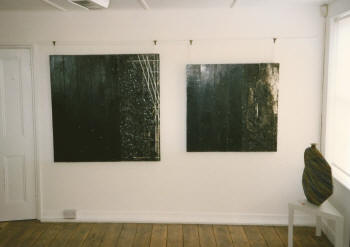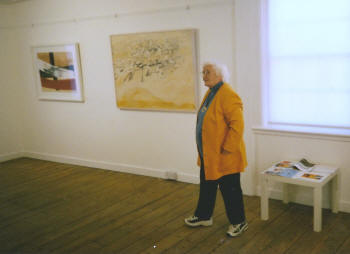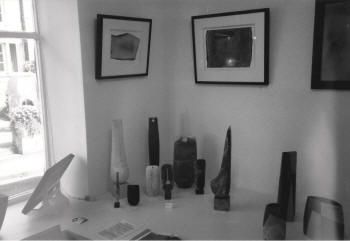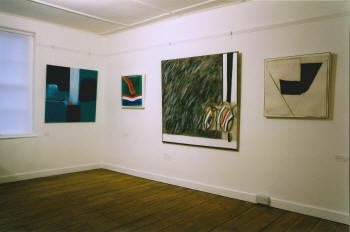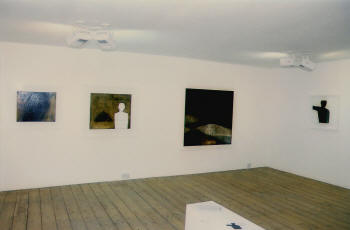|
|
| home | features | exhibitions | interviews | profiles | webprojects | gazetteer | links | archive | forum |
|
David Falconer & twelve years of the New Millennium Gallery Peta-Jane Field
Twelve years after David Falconer and his late partner Michael Holloway first opened the gallery, it has acquired an unassailable reputation for exhibiting some of the very best contemporary non-figurative art created in Cornwall. Sadly Michael passed away after the gallery’s first year, and David has been assisted by Beatrice Brandt ever since 1998. During his time at the helm, and with unerring taste, David has created a lively chapter in the colourful history of art in St Ives. His gentle manner and the kindness with which he treated his artists and his clients helped to create a gallery where people learnt to appreciate and understand art which some might consider difficult or challenging. It is good to know David is still living in St Ives, and with his expertise, will doubtless not be absent from the art scene for long.
When David and Michael first saw the building in Street-an-Pol which now houses the New Millennium, they were still living in Brighton and it was being used as a Christian Science Reading Room. David recalls, “Initially Michael had looked at another smaller building in the same street, but when I saw the building where the New Millennium is now, I just loved its size and proportions and thought it much better suited to become an art gallery. It was set in a superb location, too, opposite the Guildhall with a magnificent sculpture by Barbara Hepworth in front of it - what could be more fitting!”
Although in the beginning, the exhibitions were mixed, in 1997, Terry Duffy’s solo exhibition marked a significant turning point. “People forget now, but in the beginning, it was very hard!” David remembers, “People would comment on the lovely space and make appreciative remarks about the work but at that time, we were very innovative. We started having catalogues, which in the early days were only little A5 brochures and then as time passed, we began to use Brian Stanley as our designer and we learnt how to produce what you see today together – it was a huge learning curve for all of us!”
This gift may have given
David an insight into understanding contemporary art, its ellipses and
forms, its negative and positive spaces, its balance and rhythms.
However, maybe it is his interest in his artists as people which has
been an important factor in the gallery’s success. Indeed, convinced
that nurturing talent is tantamount, over the years, David has acted as
a stalwart advocate for many a fledgling artist – work by Magrit Clegg,
Sax Impey, Richard Nott and Marion Taylor formed The New Millennium’s
first exhibition in April 1996 - all of whom were young in terms of
artistic status. “I was always delighted to think whenever I sold a
painting for an up and coming artist, I was making a positive
contribution which would enable them continue creating new work.” Today,
many of ‘his’ artists are now very well-established, including Jeremy
Annear, Trevor Bell, Clive Blackmore, Judy Buxton, Neil Canning, Ralph
Freeman, John Hopwood, Louise McClary and Mark Surridge. David was Chair of the Friends of Tate St Ives for four years, and he recognises the Tate's importance. “Had Tate St Ives not been in existence when we first thought about running a gallery in St Ives, I doubt we would have owned one at all. Tate St Ives gave us the confidence to open - it attracted some interesting people to Cornwall and indeed, it has given the whole town a fillip. I felt it acted as a catalyst, and local business responded accordingly, changing to meet the needs of different clientele.”
David has no regrets, saying “most of my artists have become good friends.”
Photos from top to bottom: Richard Nott, 1996 inaugural show; Wilhelmina Barnes-Graham, 1997; Terry Duffy and Peter Hayes, 1998; Mixed show for Marion Whybrow's book 'Another View of St Ives'; Naomi Frears, 1999; David Falconer, 2008 |
|
|

